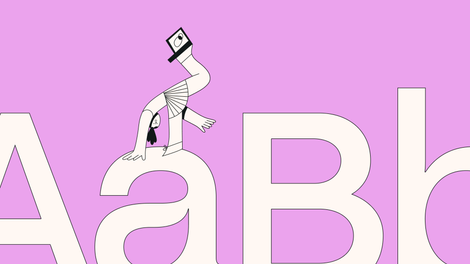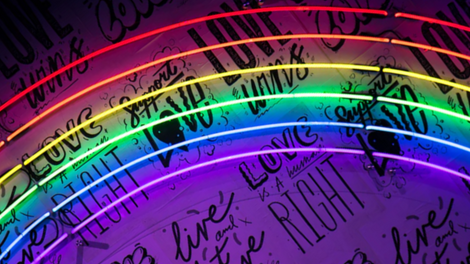There is something truly special about graphic novels and comic books as a form of storytelling.
The combination of visual imagery and speech bubble text produces a much more vibrant and engaging experience than reading just text alone. Graphic novels can bring characters to life in a completely different way, and they really add an extra dimension to stories.
It’s no surprise that comic books and graphic novels have only increased in popularity since they were first established back in the late 19th century.
For many illustrators, becoming a comic book artist is the dream. It’s often the ultimate opportunity to create a character and an amazing way to express your personal illustration style. A lot of graphic designers even go the whole hog and independently create their own comics or graphic novels, often turning them into a source of side hustle revenue.
Whether you’re a budding comic book artist or a new fan of the graphic novel genre, it helps to have a list of the best titles of all time so that you can work through it. You can use it as a way to explore different comic book art styles and to learn how great stories get told in this format.
In this list, we’ve included both standalone graphic novels, and comic books that were originally serialized in comic book form, but that you can now buy as graphic novel style compendiums. We’ve also chosen to order the list alphabetically as it seems impossible and unfair to try and rank them. Now read on and get inspired!
Jumpstart your ideas with Linearity Curve
Take your designs to the next level.
Akira by Katsuhiro Otomo
Most people know Akira as the incredibly influential anime movie, which makes sense as it is widely regarded as one of the best anime movies of all time.
There is no denying that the film is a masterpiece, but as with all manga to movie conversions, you just can’t fit everything into the running time. The original manga series from Katsuhiro Otomo has so much more character depth and development and intricate subplots than the 1988 film.
Akira is an exemplar of the cyberpunk genre, portraying a futuristic, post-apocalyptic Tokyo replete with biker gangs, psychic powers, and dark governmental influences. It is a foundational piece of art that heavily influenced other cyberpunk movies and graphic novels that followed it, such as Blade Runner. Despite being more than forty years old, Akira is still as exciting and relevant as ever.
Batman: The Dark Knight Returns by Frank Miller
Frank Miller's Batman series is often seen as the measure against which all other Batman stories are compared.
Many consider this a pointless pursuit, arguing that Miller created the best possible Batman story and that it should all have just ended there. This actually makes sense it’s written in such a way that it can be treated as final.
It’s set outside the DC Comics continuity, meaning that Miller could do what he wanted with the storyline. Originally published as a four-issue comic books series before being compiled into a graphic novel, it shows Bruce Wayne as middle-aged and retired, before being lured back to the mean streets of Gotham City to tackle familiar foes like The Joker and Two-Face.
The brooding, dark tone of The Dark Knight became the blueprint for so many superhero comics and movies that followed, but it has never been bettered.
Berlin by Jason Lutes
The great thing about getting into graphic novels late is that they are often complete by the time that you do.
In the case of Berlin by Jason Lutes, you should be glad that you didn’t start it when it first came out, and hope for a speedy conclusion. The comic started publishing in 1996, but the story didn’t conclude until 2018, with new comics published somewhat sporadically in that time.
Get creative with Linearity Curve.
All the tools you need to create comic and share them with your squad.
Luckily for you, you can now enjoy the whole story across three volumes with no need to wait. The story is set in Weimar Berlin, starting in the beginning of the Nazi era in 1928 and running up to 1933. The black and white comic book illustration style perfectly matches the somewhat somber subject matter that shows a country dealing with the rise of the Nazi party.
Black Hole by Charles Burns
Being a teenager is hard. Being a teenager at a time when a horrendous STD with nightmarish side effects is ripping through your city is even harder.
Set in 1970s Seattle, Black Hole tracks the effects of a mystery illness called The Bug that is transmitted sexually and disproportionately affects teens, and does so in devastating ways—from facial sores to weird mutations to freakish scabs.
It sounds like a straight up horror fest, but Charles Burns actually uses the storyline as a way to look at the general anxieties of being a teenager, as well as adding in a dash of drugs and murder to boot. The storyline is so good that it helped elevate the book from the alt comics scene of the 90s and into the mainstream pantheon of graphic novels.
Blue is the Warmest Color
It’s not every graphic novel that gets adapted into a film that wins a Palm d’Or at Cannes Festival.
In fact, it’s just one graphic novel, and that’s Blue is the Warmest Color. That this story was able to be converted into a film that wins such a high accolade should give you an idea of how good it is. A young French woman named Clémentine has a random encounter with a blue-haired woman named Emma. It sparks the beginning of a voyage of discovery for Clémentine as she comes to terms with her identity as a gay woman, and how class and sexuality impact her life.
It’s essentially a love story, but one that will also rip your heart out of your chest and give it a painful squeeze. Don’t say we didn’t warn you.
Ghost World by Daniel Clowes
You know how all the kids these days are saying things are a ‘mood’ or a ‘vibe’?
Well, Ghost World was a vibe long before it was a thing. This graphic novel by Daniel Clowes follows two 17 year old best friends as they navigate life in boring American suburbia. The pair spend most of their time spouting cynicism and snark, hanging out in malls, and being cuttingly pass-remarkable about random men in diners.
It’s a painfully accurate representation of what it is like to be a teenager in the throes of adolescent angst. Fun fact, the 2001 film adaptation earned an Oscar nomination for best screenplay and was one of the breakout roles for a young Scarlett Johansson.
Maus by Art Speigelman
There is arguably no better demonstration of the power of graphic novels than Art Spiegelman’s Maus.
It takes the harrowing and intense story of Spiegelman’s father’s experience as World War II holocaust survivor in Auschwitz, and tells it in a unique way. Spiegelman uses anthropomorphic comic book characters, with Jews portrayed as mice and Nazis portrayed as cats. You might think this lessens the impact or turns it into a children’s book, but it does no such thing—the human horror of the time is still more than apparent.
Spiegelman’s depiction of his father is unflinchingly honest and at times harsh, and the book reveals not only the horrors of the time, but the longtail impacts that the holocaust had on survivors and their children. Maus deservedly won the Pulitzer Prize in 1992, becoming the first—and to date only—graphic novel to win this award, marking an amazing achievement for comic book publications.
Nimona by Noella Stevenson
We’re gonna confess and say that while Nimona is an undoubtedly wonderful comic book story, that’s not the main reason that we love this title—we give it a massive heart because it actually started out on Tumblr!
Noella Stevenson originally just self-published her comic strip to the online platform, and over time it built up a bigger and bigger following, until HarperCollins picked it up and published it as a proper graphic novel in 2015. Nimona has won praise for its brazenly queer stand and for the way in which it takes common fantasy and sci-fi themes and flips them on their head.
The story follows Nimona, a teenage girl with shapeshifting abilities who becomes the apprentice of a local villain called Lord Blackheart Ballister. Nimona shows that in this modern internet-powered age, graphic artists can turn their own individual artistic expression into a nice source of revenue.
Preacher by Garth Ennis and Steve Dillon
At first glance, Preacher might seem churlish and over the top, with its penchant for graphic violence and filthy humor.
But if you look a little closer, you’ll find that it’s actually a very sharp and astute examination of American culture, and an exploration of friendship and love.
Ready to create brand assets that pack a punch?
Visit our Academy for free marketing design courses.
The story follows a Texan preacher called Jesse Custer who has been possessed by a creature that is the offspring of an angel and a demon, which gives him the power to command anyone to do what he wants. He uses this power to go after God to try and hold him accountable for what he has done to the world.
The way Northern Irish-American writer Garth Ennis uses his rapier wit to skewer religion in particular is a joy to behold. Steve Dillon’s comic book illustrations are gore-laden and intense, with the visual style perfectly matching Ennis’ acerbic words.
The Sandman by Neil Gaiman
The Sandman is an absolutely gargantuan and sprawling tale told across multiple volumes and spin-offs, and it’s more than worthy of the amount of time you will invest in devouring it.
On the visual front it is a feast for the eyes, with a wide range of incredible artists all lending their talents to bring The Sandman to life. The story starts when we meet a godlike being known as Dream or Morpheus, who is the ruler of dreams. He is accidentally imprisoned by an occultist who was intending to trap Death.
After 70 years, Dream manages to escape and he sets about rebuilding his kingdom. The joy of The Sandman is that as well as the main arc that spans the whole series, there are lots of standalone vignettes that can not only be enjoyed in and of themselves, but that expand and build upon the fascinating world that Gaiman has created. It was recently adapted into a Netflix series, which thankfully has been commissioned for a second season.
Watchmen by Alan Moore and Dave Gibbons
Pretty much every single list of the greatest graphic novels and comic books of all time is going to include Alan Moore and Dave Gibbons’ Watchmen, and many of them will give it the number one spot.
This is with good reason—Watchmen is probably the best comic book story of the 20th century. Set up as a skewering of the traditional superhero genre, the story is set in an alternate timeline where the US won the Vietnam war and is now on the verge of World War III with the Soviet Union. Oh, and superheroes are living amongst the general population, unable to make use of their powers unless they are employed by the government.
It kicks off as a murder mystery, but ends up as an examination of the nature of power. Gibbons’ artwork is stunning and iconic, and he and Moore can take pride in creating one of the best things to be produced by DC Comics. Oh, and both the movie adaptation and TV series are stellar too, showing that it’s hard to go wrong when the source material is this strong.
There are so many other graphic novels that we wanted to include on this list, and it really could have gone on forever, but alas one list can only include so much.
We hope that this rundown has inspired you to dive into the rich world of graphic novels, or perhaps even pushed you to take your artistic explorations to be a comic artist more seriously. For tips on drawing everything from hair to cars, dive into our tutorials, and for more graphic design inspiration be sure to check out our blog. And if you'd like to get started on making your own comic book art, don't forget to check out Linearity Curve (formerly Vectornator).
Jumpstart
your ideas with
Linearity Curve
Take your designs to the next level.
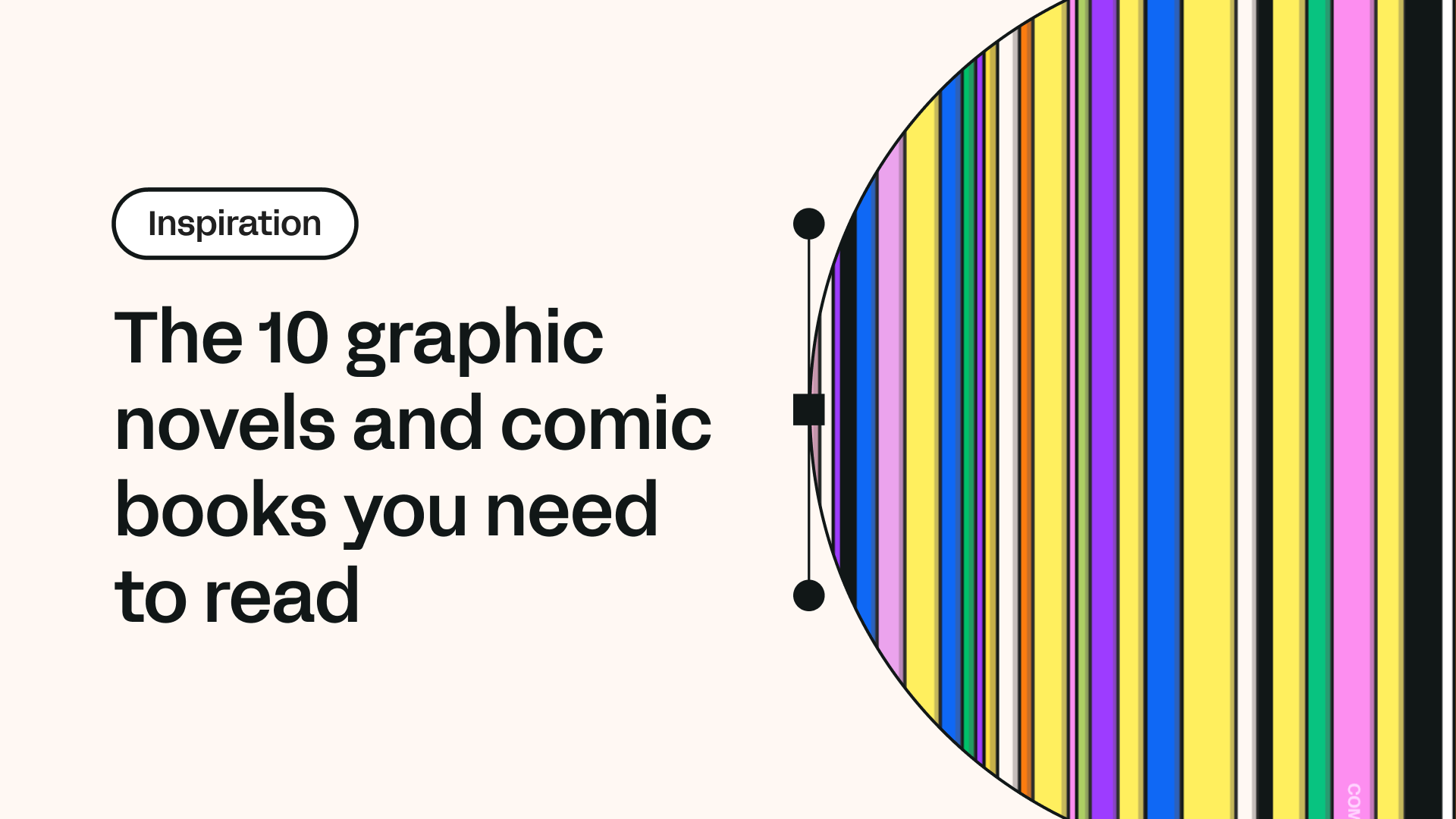
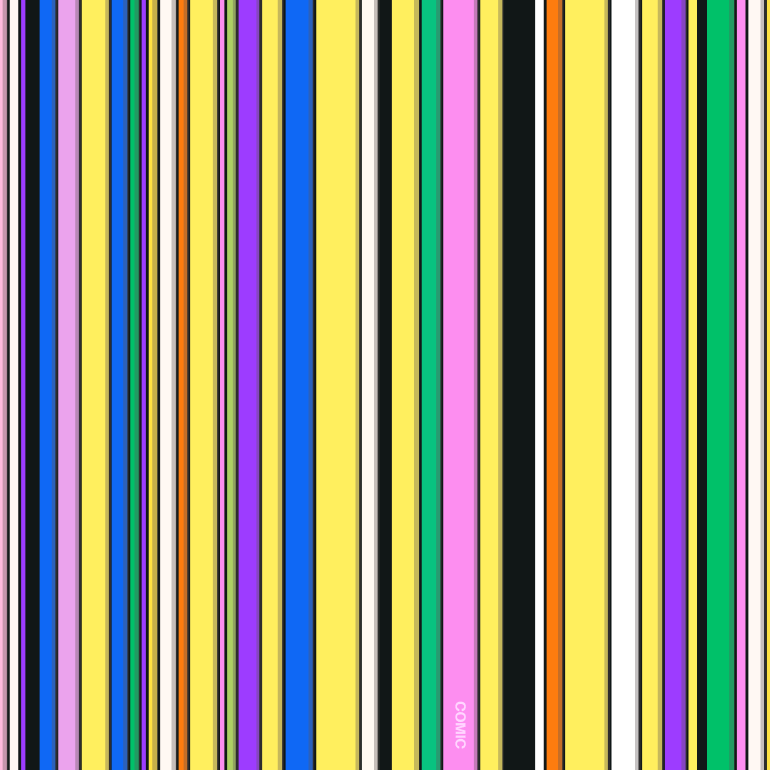
Share this!
Jonny Tiernan
Jonny is a contributing writer to the Linearity Blog.


:quality(75))
:quality(75))



:quality(75))
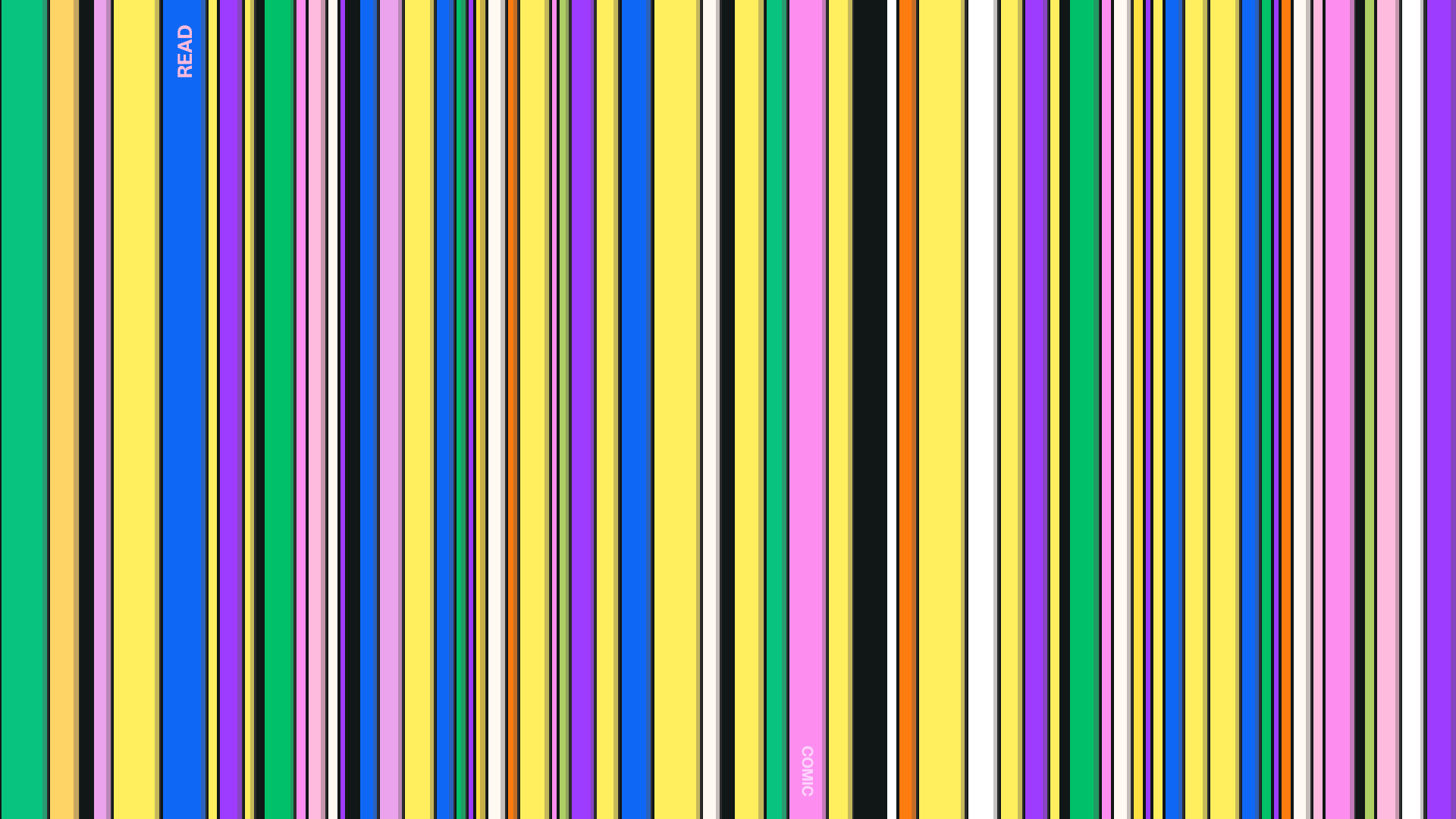
:quality(75))
:quality(75))
